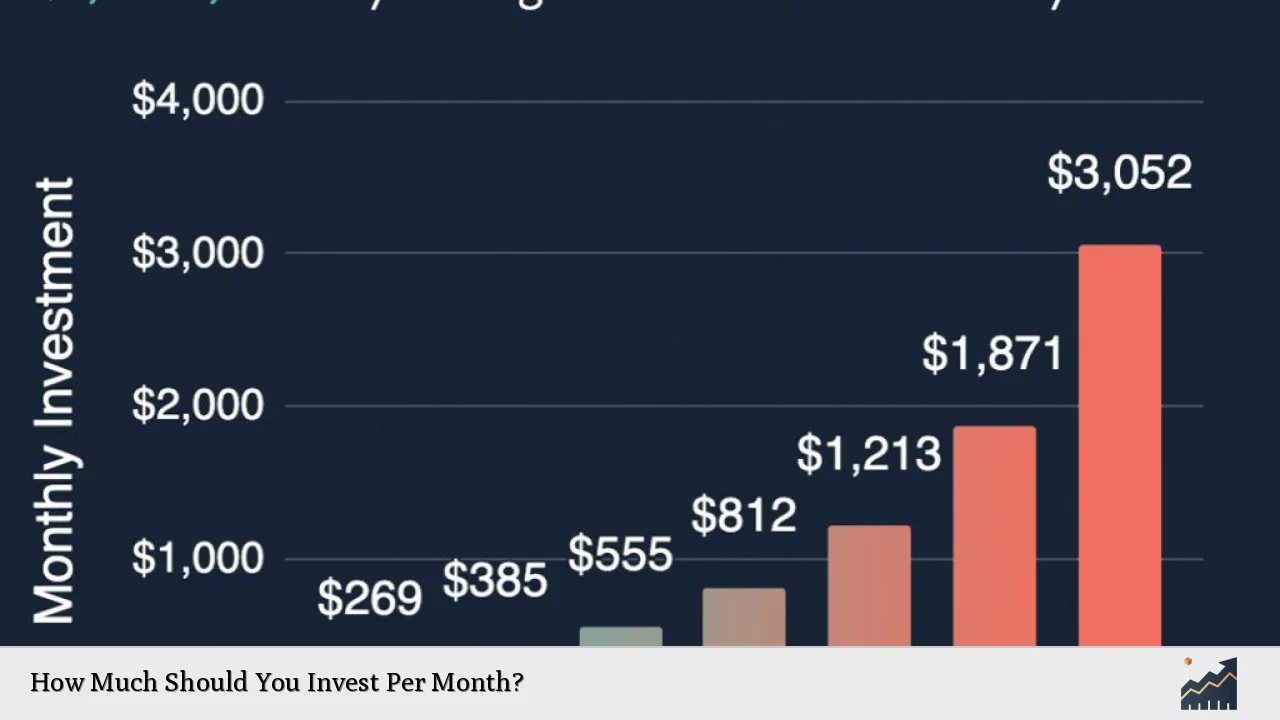Determining how much to invest each month is a crucial decision for anyone looking to build wealth and secure their financial future. The amount you choose to invest can significantly impact your long-term financial goals, such as retirement, purchasing a home, or funding education. This article will guide you through the factors to consider when deciding your monthly investment amount, the benefits of regular investing, and practical strategies to help you achieve your financial objectives.
| Factor | Consideration |
|---|---|
| Income Level | Your current income influences how much you can realistically invest. |
| Financial Goals | Define your short-term and long-term financial goals to determine your investment needs. |
| Expenses | Assess your monthly expenses to find a comfortable investment amount. |
| Investment Horizon | The length of time you plan to invest affects how much you should contribute monthly. |
Understanding Your Financial Situation
Before deciding how much to invest each month, it's essential to have a clear understanding of your financial situation. This includes evaluating your income, expenses, debts, and existing savings. By analyzing these factors, you can determine a comfortable amount that won't strain your finances.
- Income Level: Your monthly income is the primary factor that dictates how much you can afford to invest. Ensure that you have enough left after covering essential expenses.
- Monthly Expenses: Calculate your fixed and variable expenses. This includes rent or mortgage, utilities, groceries, transportation, and discretionary spending. Subtracting these from your income will give you a clearer picture of how much you can allocate toward investments.
- Debt Obligations: If you have outstanding debts, such as student loans or credit card debt, consider prioritizing paying these off before committing significant amounts to investments. High-interest debts can hinder your ability to grow wealth effectively.
Setting Financial Goals
Your financial goals play a pivotal role in determining how much you should invest each month. Goals can be categorized as short-term (1-5 years), medium-term (5-10 years), or long-term (10+ years).
- Short-Term Goals: If you're saving for a vacation or a new car within the next few years, consider setting aside a specific amount each month that aligns with the total cost of these goals.
- Medium-Term Goals: For goals like buying a home or funding education, calculate the total amount needed and divide it by the number of months until you need the funds. This will help establish a monthly investment target.
- Long-Term Goals: Retirement planning is often the most significant long-term goal. A common recommendation is to aim for investing 10% to 15% of your gross income annually towards retirement accounts like a 401(k) or IRA.
The Benefits of Regular Investing
Regular investing offers several advantages that can enhance your financial growth over time:
- Dollar-Cost Averaging: By investing a fixed amount regularly, you take advantage of dollar-cost averaging. This means you'll buy more shares when prices are low and fewer when prices are high, potentially lowering your average cost per share over time.
- Disciplined Approach: Committing to monthly investments fosters discipline in saving and investing habits. It encourages consistent contributions regardless of market conditions.
- Compounding Returns: Over time, the returns on your investments generate additional returns through compounding. The earlier you start investing regularly, the more significant the impact on your wealth accumulation.
Practical Steps for Monthly Investments
To establish an effective monthly investment plan, follow these practical steps:
1. Open an Investment Account: Choose an investment account that aligns with your goals—consider options like brokerage accounts for stocks or retirement accounts for long-term savings.
2. Set Up Automatic Contributions: Automate your investments by setting up automatic transfers from your checking account to your investment account each month. This ensures consistency and helps you stick to your plan.
3. Choose Investment Vehicles Wisely: Depending on your risk tolerance and investment horizon, select suitable vehicles such as index funds, ETFs, or mutual funds that offer diversification and lower fees.
4. Review and Adjust Regularly: Periodically review your investment strategy and contributions based on changes in income, expenses, or financial goals. Adjustments may be necessary as life circumstances evolve.
5. Start Small if Necessary: If you're unsure about committing large amounts initially, start with smaller contributions that fit comfortably within your budget. You can gradually increase this amount as you become more confident in your investment strategy.
FAQs About How Much You Should Invest Per Month
FAQs About How Much Should You Invest Per Month
- What is a good starting amount for monthly investments?
A good starting point is $100 per month; however, any amount that fits within your budget is beneficial. - How do I determine my investment goals?
Identify what you want to achieve financially in both the short and long term. - Can I adjust my monthly investment later?
Yes, it’s advisable to review and adjust your contributions based on changing circumstances. - What types of accounts should I use for investing?
You can use brokerage accounts for stocks or retirement accounts like IRAs for long-term savings. - Is it better to invest lump sums or monthly?
Monthly investments help mitigate market volatility through dollar-cost averaging.
In conclusion, deciding how much to invest per month requires careful consideration of various personal financial factors including income level, expenses, and specific financial goals. Regular investing not only builds wealth over time but also instills disciplined saving habits that are essential for achieving long-term financial success. Start small if necessary but remain consistent in contributing towards your financial future.

